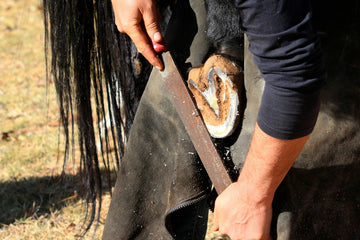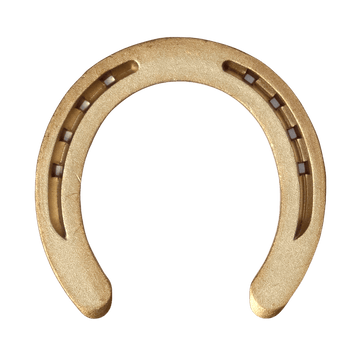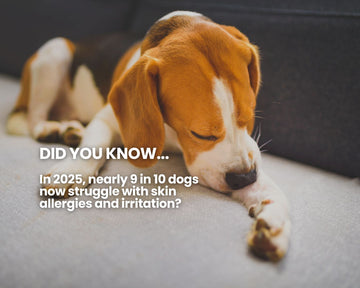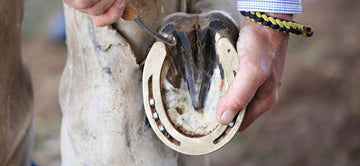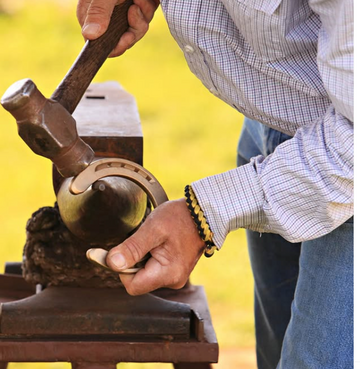Hoof health is essential for the well-being of horses, especially domesticated ones, who rely on humans to maintain proper care of their horse's hooves. Regular hoof trimming helps prevent discomfort, lameness, and severe health conditions like laminitis.
Understanding why horses need regular hoof trimming can help you provide the best care for your horse, ensuring they remain healthy and active.
Hoof Health in Domesticated Horses
In domestic horses, hooves do not wear down naturally like they would in the wild. Regular hoof trimming is necessary for maintaining hoof health and preventing issues that could impact a horse’s overall well-being.
Why Trimming Is Necessary
-
Prevents Excess Hoof Growth: Without regular trimming, hooves can grow excessively, leading to an imbalanced and deformed shape that can cause discomfort. Excessive growth can also lead to poor hoof quality, affecting the horse's overall performance and health.
-
Prevents Hoof Problems: Without proper care, horses can develop serious issues like laminitis, a painful inflammation of the hoof, or founder, which affects the circulation in the hooves.
-
Improves Balance and Function: Trimming helps to maintain a balanced hoof shape, ensuring the horse’s weight is distributed evenly and preventing lameness.
Living Conditions and Hoof Care
Domesticated horses are more prone to hoof problems due to their environment. Riding horses, in particular, require regular hoof trimming to maintain their performance and prevent hoof-related issues.
Unlike wild horses, who traverse various terrains, domesticated horses may spend a significant amount of time on soft surfaces, limiting natural wear and tear on their hooves. As a result, hoof trimming becomes necessary to maintain proper hoof health.

The Natural Hoof Care of Wild Horses
A wild horse has a different relationship with its hooves due to its environment and lifestyle.
How Wild Horses Maintain Hoof Health
-
Natural Wear: Wild horses' hooves naturally wear down as they move across a variety of terrains, which helps maintain their hoof health. The constant movement across hard and soft surfaces keeps their hooves balanced and prevents excessive growth.
-
Adaptation to Environment: Wild horses’ hooves are adapted to their environment. The terrain shapes the hooves, keeping them naturally balanced and preventing overgrowth.
However, despite these natural benefits, wild horses are also at risk of hoof and leg injuries due to harsh environmental factors. They don’t have the regular care that domesticated horses receive, which can sometimes result in serious hoof issues.
Key Differences from Domesticated Horses
-
Wild horses do not need trimming, but they are not immune to severe hoof and leg injuries.
-
Domesticated horses require more proactive hoof care to prevent overgrowth and damage, which is why trimming is essential.
The Impact of Horseshoes on a Horse’s Hooves
Horseshoes are often used to protect a horse’s hooves, but they can also pose challenges if not fitted correctly.
Benefits of Horseshoes
-
Protection on Hard Ground: Horseshoes help prevent excessive wear and tear on hooves, particularly when horses work on hard or rocky ground.
-
Improved Performance: Horseshoes can improve a horse’s performance by providing extra grip and stability, especially during activities like jumping or racing. Shod horses often experience improved performance and protection against various environmental factors.
Potential Issues with Horseshoes
-
Improper Fitting: If horseshoes are not fitted properly, they can cause discomfort or even pain, leading to problems like bruising or damage to the hoof wall.
-
Not a Replacement for Trimming: Horseshoes can’t replace the need for regular trimming. Trimming helps maintain the balance and overall health of the hoof, which shoes alone cannot address.

The Benefits of Regular Trimming
Regular trimming of hooves is crucial for maintaining a horse’s health and ensuring their comfort. Barefoot horses, which are maintained without shoes, rely on regular trimming and exercise to ensure hoof health.
Why Regular Trimming is Essential
-
Prevents Hoof Overgrowth: Excessive hoof growth can lead to discomfort, difficulty walking, and imbalanced hooves.
-
Helps Prevent Hoof Problems: Regular trimming reduces the risk of conditions like laminitis, which can lead to severe pain and long-term health issues.
-
Improves Mobility: Properly maintained hooves allow a horse to move freely and comfortably, preventing lameness and other movement-related issues.
The Role of a Farrier in Hoof Care
A farrier is a professional responsible for trimming and shoeing horses’ hooves. A farrier's expertise is crucial in maintaining the integrity of the hoof capsule and preventing conditions like laminitis. Their expertise is crucial in maintaining a horse’s hoof health.
Responsibilities of a Farrier
-
Trimming Hooves: A farrier trims hooves regularly to ensure they are properly shaped and balanced.
-
Fitting Horseshoes: They also fit and apply horseshoes when necessary, ensuring they are correctly sized and positioned.
-
Hoof Care Education: Farriers educate horse owners about proper hoof care and can spot early signs of hoof problems.
-
Early Problem Identification: A farrier can identify and address hoof issues before they become serious problems.

Maintaining Hoof Health Through Proper Care
To maintain horse's hooves health, proper care and consistent attention are required. A combination of regular trimming, good nutrition, and exercise can keep hooves in excellent condition.
Key Practices for Maintaining Hoof Health
-
Regular Hoof Inspections: Routine checks of the hooves can help catch problems early and prevent further complications.
-
Proper Nutrition: A healthy diet rich in essential nutrients supports strong hooves and overall health.
-
Exercise: Regular movement helps wear down hooves naturally, reducing the need for excessive trimming.
Working with a Farrier
Collaborating with a skilled farrier to create a personalized hoof care plan is essential. Farriers can help design a hoof care routine that meets the unique needs of each horse.
Frequently Asked Questions
What happens if you don't trim horse hooves?
If hooves are not trimmed regularly, they can become overgrown, leading to discomfort, lameness, and an increased risk of hoof infections.
Do wild horses get overgrown hooves?
Wild horses typically do not experience overgrown hooves due to the natural wear and tear of their hooves on rough terrain. However, they may still face injury risks due to lack of trimming.
Why do wild horses not need hoof trimming?
Wild horses' hooves naturally wear down through constant movement across different terrains, preventing overgrowth and maintaining proper hoof balance.
How did horses survive before horseshoes?
Before horseshoes, horses’ hooves naturally wore down due to their movement across various surfaces. Wild horses and domesticated horses used for work were more prone to hoof wear and tear, but their hooves remained functional without artificial protection.
Why Horses Need Their Hooves Trimmed Conclusion
Hoof care is essential for the overall health and comfort of domesticated horses. Regular trimming, combined with proper nutrition and exercise, can help maintain strong, healthy hooves and prevent issues like laminitis and founder.
A farrier plays an essential role in managing a horse’s hoof health and ensuring that trimming and shoeing are done correctly.
Regular hoof inspections and proper care can ensure your horse remains healthy, active, and free from discomfort.

